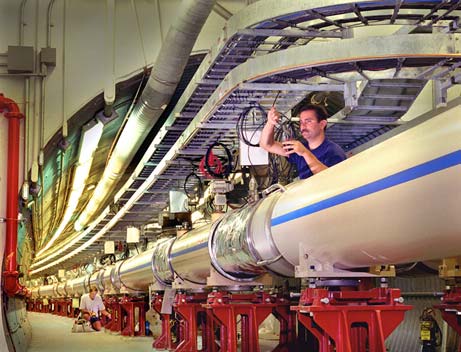|
Star Gate Facts Black Hole Technology |
|
|
..
Lab Creates
"Black Hole"
March 18, 2005—A Brown University physicist believes a fireball he created in a particle accelerator may have been a black hole. Using the Relativistic Heavy Ion Collider (pictured above) at Brookhaven Laboratory in Upton, New York, Horatiu Nastase smashed the nuclei of gold atoms together at nearly the speed of light. The collisions were powerful enough to break the nuclei into gluons and quarks, the most basic building blocks of matter. The particles created a plasma fireball 300 million times hotter than the surface of the sun. In a paper published on Cornell University's arxiv.org Web site, Nastase wrote that, based on his calculations, the fireball behaved like a black hole, absorbing streams of particles and radiating them as heat. For now, any fears of the collider creating a civilization-destroying supergravity vortex are misplaced. The forces involved in the experiment were simply too weak, and the theoretical black hole was very short-lived. How brief? Divide a second by 10,000,000,000,000,000,000,000,000. SOURCE: National Geographic |
|
| FAIR USE NOTICE: This page contains copyrighted material the use of which has not been specifically authorized by the copyright owner. Pegasus Research Consortium distributes this material without profit to those who have expressed a prior interest in receiving the included information for research and educational purposes. We believe this constitutes a fair use of any such copyrighted material as provided for in 17 U.S.C § 107. If you wish to use copyrighted material from this site for purposes of your own that go beyond fair use, you must obtain permission from the copyright owner. | |
|
|

